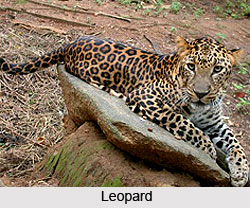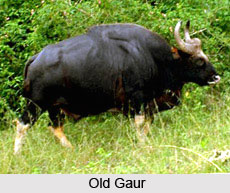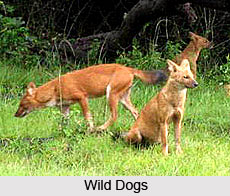 Quite a number of sanctuaries have been in the core of the Southern Indian. Mudumalai Wildlife Sanctuary is a significant one, ennobled by its wild fauna and flora. It is situated in Mudumalai Wildlife Sanctuary, lying in the extreme western borders of Tamil Nadu.
Quite a number of sanctuaries have been in the core of the Southern Indian. Mudumalai Wildlife Sanctuary is a significant one, ennobled by its wild fauna and flora. It is situated in Mudumalai Wildlife Sanctuary, lying in the extreme western borders of Tamil Nadu.
The sanctuary has tropical moist deciduous vegetation; in some parts of the sanctuary parched deciduous trees and thorny scrubs are found with the sights of few blackbucks, running here and there. The summit of Kargudi Hill offers an outstanding panoramic view of the sanctuary, including the Moyar Gorge.
The formation of Mudumalai Wildlife Sanctuary has a story behind it. It was formerly a game reserve. In the beginning of 1940s, Mudumalai was announced to be a wildlife sanctuary covering a small area of 62 sq km area. In the present days, it is a part of national park and together they are extended more than an area of 321 sq km.
 Mudumalai Wildlife Sanctuary has a varied topography. There are low hills regions, valleys, plains and also few tracts of marshy lands. Multitudes of animals are found enjoying the solace of wild sanctuary. Tigers are seen only on special occasions and leopards are visible frequently. The scenes of wild dog, and other mammals like Asian Elephant, Gaur (Indian Bison), Tiger, Leopard, Striped Hyena, Leopard-cat, Rusty Spotted Cat, moving in large hordes are not something unusual here in the reserve. Also Small Indian Civet, Striped-necked Mongoose, Ruddy Mongoose, Sloth Bear, Indian Giant Squirrel, Sainbar, Spotted Deer (Chital), Barking Deer, Mouse Deer, Chowsingha (Four-horned Antelope), Indian Pangolin etc are worth to note. Mudumalai`s major appeal is the huge herds of herbivores such as gaur and elephant.
Mudumalai Wildlife Sanctuary has a varied topography. There are low hills regions, valleys, plains and also few tracts of marshy lands. Multitudes of animals are found enjoying the solace of wild sanctuary. Tigers are seen only on special occasions and leopards are visible frequently. The scenes of wild dog, and other mammals like Asian Elephant, Gaur (Indian Bison), Tiger, Leopard, Striped Hyena, Leopard-cat, Rusty Spotted Cat, moving in large hordes are not something unusual here in the reserve. Also Small Indian Civet, Striped-necked Mongoose, Ruddy Mongoose, Sloth Bear, Indian Giant Squirrel, Sainbar, Spotted Deer (Chital), Barking Deer, Mouse Deer, Chowsingha (Four-horned Antelope), Indian Pangolin etc are worth to note. Mudumalai`s major appeal is the huge herds of herbivores such as gaur and elephant.
The gaur regained from a `rinderpest epidemic` in the late 1960s, and now some of the fine specimens are found here, their gigantic body structures nicely go with the wild habitat of the reserve. Elephant herds and solitary males, including male elephants without tusks and also `makhanas` are a common sight. The famous hunting grounds of past times - Umbetta, Masinagudi, Kargudi, hosting a variety of Indian wildlife, form a part of the territory of Mudumalai Wildlife Sanctuary.
 Tourism industry is growing in leaps and bounds, nicely organized and managed by the concerned authority. The planned routes are best crossed by jeep or open vans, while on the back of the elephants, tourists are advised for the regions with huge grasses and along the streams. Numerous waterholes are thronged with a lot of animal activities. The sweet cry of the Indian Giant Squirrel can be easily heard from the green foliage, quite high above. A mélange of woodland birds are found including Grey Junglefbwl, Red Spurfowl, Grey Fraticolin, Painted Spurfowl, Painted Bush Quail, White-bellied Woodpecker, Lesser Yellownape, Greater Fiameback, Streak-throated Woodpecker, Chestnut-headed Bee-eater, Emerald Dove, Green Imperial Pigeon, Pompadour Green Pigeon, Grey-bellied Cuckoo, Indian Cuckoo, Alpine Swift, BLick-hooded Oriole, Greater Racket-tailed Drongo, Black-headed Cuckooshrike, Grey-headed Bulbul, Forest Wagtail, Crimson-backed Sunbird, Loten`s Sunbird etc. Birds` raptors like Changeable Hawk Eagle, Black Eagle, Oriental Honey-buzzard, Jerdon`s Baza, Bonelli`s Eagle. Crested Goshawk, Besra, Mottled Wood Owl, Brown Hawk Owl, reside in the reserve and that too in large numbers.
Tourism industry is growing in leaps and bounds, nicely organized and managed by the concerned authority. The planned routes are best crossed by jeep or open vans, while on the back of the elephants, tourists are advised for the regions with huge grasses and along the streams. Numerous waterholes are thronged with a lot of animal activities. The sweet cry of the Indian Giant Squirrel can be easily heard from the green foliage, quite high above. A mélange of woodland birds are found including Grey Junglefbwl, Red Spurfowl, Grey Fraticolin, Painted Spurfowl, Painted Bush Quail, White-bellied Woodpecker, Lesser Yellownape, Greater Fiameback, Streak-throated Woodpecker, Chestnut-headed Bee-eater, Emerald Dove, Green Imperial Pigeon, Pompadour Green Pigeon, Grey-bellied Cuckoo, Indian Cuckoo, Alpine Swift, BLick-hooded Oriole, Greater Racket-tailed Drongo, Black-headed Cuckooshrike, Grey-headed Bulbul, Forest Wagtail, Crimson-backed Sunbird, Loten`s Sunbird etc. Birds` raptors like Changeable Hawk Eagle, Black Eagle, Oriental Honey-buzzard, Jerdon`s Baza, Bonelli`s Eagle. Crested Goshawk, Besra, Mottled Wood Owl, Brown Hawk Owl, reside in the reserve and that too in large numbers.
For the tourists, the days from late January to early April are most rewarding for the wildlife enthusiast. As a special attraction an elephant camp is built near the reception center of Mudumalai Wildlife Sanctuary. This camp throws an attractive glimpse into the life of these elephants. Despite of its treasures of wild species, this sanctuary is thriving under the pressure of huge demands of human society like settlements, cattle grazing, forest fires, developmental projects and a busy highway. Thus it is a mammoth task that the forest department is bearing to preserve and protect the wild flora and fauna from getting into extinction.



















